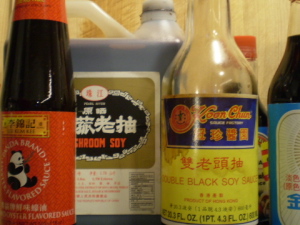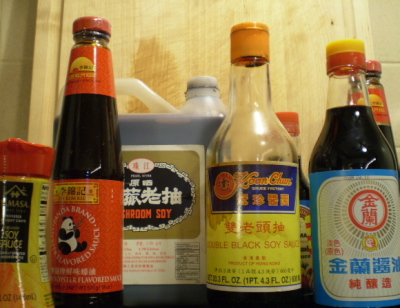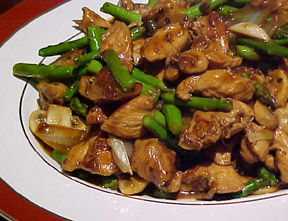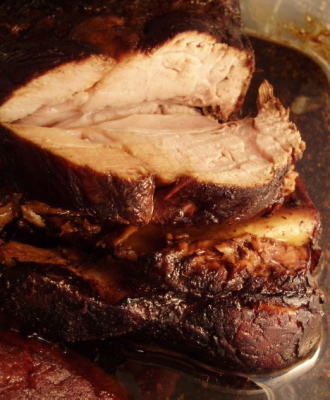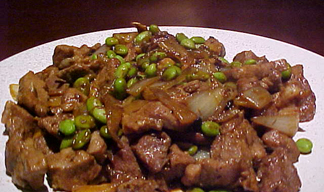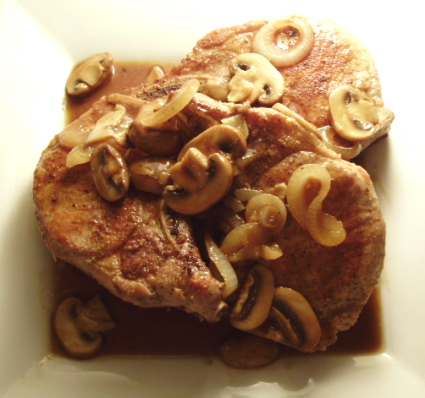The Secret’s In The Sauce(s)
Light soy sauce, dark soy sauce, oyster sauce….what are they, and what’s the difference?!
Soy sauce, made of fermented soy beans, can be had in different “strengths” or blends, not unlike wines. Light (also called “thin”) soy sauce typically has a brighter, saltier flavor, and has a sharper “alcohol” aroma. The liquid itself is very thin, like water. Dark soy sauce is a sweeter, thicker, more viscous sauce (it will cling to the sides of the bottle) made so by the addition of molasses. It has a fuller flavor because of the strength of the soy and the addition of the molasses. I like the addition of the molasses because it rounds out the flavors (You might notice I add a little brown sugar to many of my recipes; I do so because it acts as a natural flavor enhancer).
I like mixing the two soy sauces together, in order to get the “highs” from the light soy and the depth and body of the dark. I often vary the proportions. As a dipping sauce, I will use more light soy for lighter foods, like fish and shrimp, and more dark soy for things like pork and beef. For chicken, I can go either way, depending on the preparation. For marinades I tend to use more light, depending on what other ingredients are being used.
For use in cooking, dark soy sauce will thicken and sweeten over time, not to mention make the dish darker in color than the same amount of light will. But the sugar content will make it susceptible to burning, so keep an eye on it when grilling or broiling. Light soy sauce is preferred in stir frys because of the typically short cooking time, and a little dark can be added for coloring and flavor.
Other types of soy sauce include Black soy sauce, an even more potent dark soy, and there is even Double Black! A favorite of mine is Mushroom soy, which has mushroom extract added to it, adding yet another dimension of flavor. My favorite brands are Kimlan, Lee Kum Kee, Pearl River and Koon Chun from Hong Kong.
Oyster sauce is a sauce made of oyster extracts, water, salt and sugar. Oysters are cooked down until they are reduced to very concentrated, flavorful elements. Water, sugar and salt are added to make the sauce; msg and other flavor enhancers are also added to finish the sauce. The resulting sauce has little essence of oysters as we know them; to me it tastes like a thick, rich soy sauce, with a slightly earthy or “oceany” edge. It happens to be my favorite dipping sauce for naturally cooked, poached, boiled or otherwise “bland” foods, like chicken, pork or other meats used to make stock or broth.
Many different soy sauces and oyster sauce can be found on regular or specialty grocery store shelves. More authentic brands can be found in Asian markets. Almost all are inexpensive, so do yourself a favor and make a special trip to get some different sauces for your next recipe!
